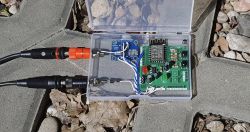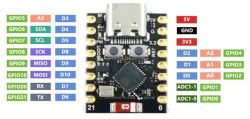
An acquaintance asked me to assemble "something" that would give him notification when the battery in his very little used car discharges too much.
For a quick thought I came up with ESP8266 + ina219 and a piece of code that would take a measurement, send it to the server and put the system to sleep for a set period of time in order to start the cycle again after waking up. The board is my universal board for the ESP8266 and additionally a module with the INA219 chip which I use to measure voltage.
The whole thing goes to my server where the data is collected, visualised and, if necessary, a notification is sent by a simple SMS through the phone which I have connected to the server and makes for a universal SMS gateway.
The device fit into a box from some small oled display, 2 banana sockets and a 300mA fuse were installed and I prepared wires with crocodiles to plug it straight into the battery. The unit draws about 6 mA when asleep, which can be greatly improved by using another linear stabiliser instead of the 1117 and go down to about 90 μA. When sending a measurement it draws about 200 mA for 300 ms. Quite by the way there is a DS18b20 on the board.
This is where you can look at the measurement results
I forgot to add and have already added. The program code that is in the ESP8266, you can take a look at how the wakeup and sending data to the server is implemented.

Cool? Ranking DIY






